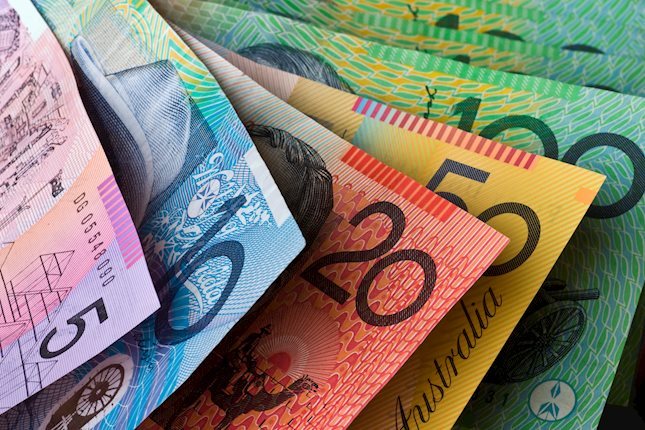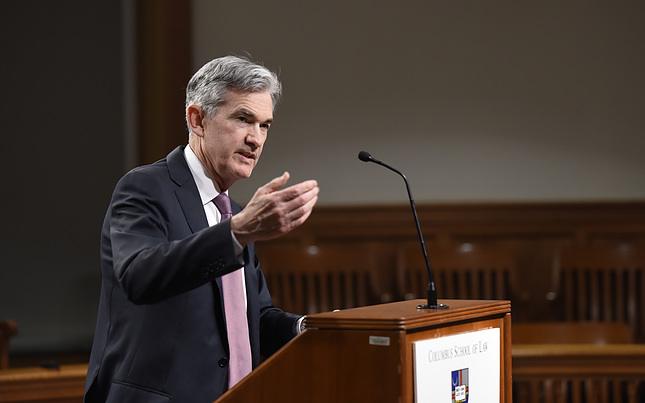Here is what you need to know on Tuesday, October 15:
Following a quiet start to the week, the US Dollar (USD) gathered strength and managed to build on the previous week's gains, with the USD Index reaching its highest level since early August above 103.00 on Monday. The US economic calendar will not offer any high-tier data releases on Tuesday. Eurostat will publish Industrial Production data for August and Germany's ZEW economic research institute will release October sentiment data for the Eurozone and Germany. Finally, Statistics Canada will release September Consumer Price Index figures later in the American session. In the second half of the day, several Federal Reserve (Fed) policymakers are scheduled to deliver speeches.
US Dollar PRICE Last 7 days
The table below shows the percentage change of US Dollar (USD) against listed major currencies last 7 days. US Dollar was the strongest against the Canadian Dollar.
| USD | EUR | GBP | JPY | CAD | AUD | NZD | CHF | |
|---|---|---|---|---|---|---|---|---|
| USD | 0.74% | 0.28% | 0.78% | 1.38% | 0.69% | 0.77% | 0.92% | |
| EUR | -0.74% | -0.46% | 0.03% | 0.64% | -0.05% | 0.00% | 0.17% | |
| GBP | -0.28% | 0.46% | 0.49% | 1.09% | 0.42% | 0.47% | 0.64% | |
| JPY | -0.78% | -0.03% | -0.49% | 0.72% | -0.08% | -0.03% | 0.16% | |
| CAD | -1.38% | -0.64% | -1.09% | -0.72% | -0.68% | -0.60% | -0.45% | |
| AUD | -0.69% | 0.05% | -0.42% | 0.08% | 0.68% | 0.06% | 0.23% | |
| NZD | -0.77% | -0.01% | -0.47% | 0.03% | 0.60% | -0.06% | 0.17% | |
| CHF | -0.92% | -0.17% | -0.64% | -0.16% | 0.45% | -0.23% | -0.17% |
The heat map shows percentage changes of major currencies against each other. The base currency is picked from the left column, while the quote currency is picked from the top row. For example, if you pick the US Dollar from the left column and move along the horizontal line to the Japanese Yen, the percentage change displayed in the box will represent USD (base)/JPY (quote).
The data from Japan showed on Tuesday that Industrial Production contracted by 3.3% on a monthly basis in August, matching the market expectation. Meanwhile, Kyodo News Agency reported that Prime Minister Shigeru Isihiba said that his government aims to compile a supplementary budget for the current fiscal year, projected to exceed last year's 13.1 trillion yen ($87.6 billion). After posting small gains on Monday, USD/JPY edges lower early Tuesday and trades below 149.50.
EUR/USD turned south in the American session on Monday and dropped below 1.0900 for the first time in over two months. The pair struggles to hold its ground in the European morning and stays below this level.
USD/CAD extended its winning streak into a ninth consecutive trading day on Monday. Ahead of the Canadian inflation report, the pair clings to small daily gains slightly above 1.3800 early Tuesday.
The UK's Office for National Statistics announced on Tuesday that the ILO Unemployment Rate eased to 4.0% in the three months to August, following July’s 4.1% reading. Additional details of the report showed the Employment Change data for August arrived at 373K, compared to 265k reported in July. Furthermore, Average Earnings excluding Bonus in the UK rose 4.9% 3M YoY in August versus a 5.1% growth seen in July. GBP/USD showed no immediate reaction to these figures and was last seen moving sideways at around 1.3050.
Gold failed to make a decisive move in either direction on Monday and closed the day virtually unchanged. XAU/USD extends its sideways grind near $2,650 in the European morning.
Inflation FAQs
Inflation measures the rise in the price of a representative basket of goods and services. Headline inflation is usually expressed as a percentage change on a month-on-month (MoM) and year-on-year (YoY) basis. Core inflation excludes more volatile elements such as food and fuel which can fluctuate because of geopolitical and seasonal factors. Core inflation is the figure economists focus on and is the level targeted by central banks, which are mandated to keep inflation at a manageable level, usually around 2%.
The Consumer Price Index (CPI) measures the change in prices of a basket of goods and services over a period of time. It is usually expressed as a percentage change on a month-on-month (MoM) and year-on-year (YoY) basis. Core CPI is the figure targeted by central banks as it excludes volatile food and fuel inputs. When Core CPI rises above 2% it usually results in higher interest rates and vice versa when it falls below 2%. Since higher interest rates are positive for a currency, higher inflation usually results in a stronger currency. The opposite is true when inflation falls.
Although it may seem counter-intuitive, high inflation in a country pushes up the value of its currency and vice versa for lower inflation. This is because the central bank will normally raise interest rates to combat the higher inflation, which attract more global capital inflows from investors looking for a lucrative place to park their money.
Formerly, Gold was the asset investors turned to in times of high inflation because it preserved its value, and whilst investors will often still buy Gold for its safe-haven properties in times of extreme market turmoil, this is not the case most of the time. This is because when inflation is high, central banks will put up interest rates to combat it. Higher interest rates are negative for Gold because they increase the opportunity-cost of holding Gold vis-a-vis an interest-bearing asset or placing the money in a cash deposit account. On the flipside, lower inflation tends to be positive for Gold as it brings interest rates down, making the bright metal a more viable investment alternative.
Information on these pages contains forward-looking statements that involve risks and uncertainties. Markets and instruments profiled on this page are for informational purposes only and should not in any way come across as a recommendation to buy or sell in these assets. You should do your own thorough research before making any investment decisions. FXStreet does not in any way guarantee that this information is free from mistakes, errors, or material misstatements. It also does not guarantee that this information is of a timely nature. Investing in Open Markets involves a great deal of risk, including the loss of all or a portion of your investment, as well as emotional distress. All risks, losses and costs associated with investing, including total loss of principal, are your responsibility. The views and opinions expressed in this article are those of the authors and do not necessarily reflect the official policy or position of FXStreet nor its advertisers. The author will not be held responsible for information that is found at the end of links posted on this page.
If not otherwise explicitly mentioned in the body of the article, at the time of writing, the author has no position in any stock mentioned in this article and no business relationship with any company mentioned. The author has not received compensation for writing this article, other than from FXStreet.
FXStreet and the author do not provide personalized recommendations. The author makes no representations as to the accuracy, completeness, or suitability of this information. FXStreet and the author will not be liable for any errors, omissions or any losses, injuries or damages arising from this information and its display or use. Errors and omissions excepted.
The author and FXStreet are not registered investment advisors and nothing in this article is intended to be investment advice.
Recommended content
Editors’ Picks

AUD/USD: Not out of the woods yet
The continuation of the selling pressure around the US Dollar lent extra wings to AUD/USD and propelled it back above the 0.6500 barrier ahead of the publication of the RBA Minutes of its November 5 event.

EUR/USD: The extension and duration of the rebound remain to be seen
EUR/USD regained further balance and trespassed the key 1.0600 hurdle to clock three-day highs following extra weakness in the Greenback and some loss of momentum around the Trump rally.

Gold gives signs of life and reclaims $2,600/oz
After suffering large losses in the previous week, Gold gathers recovery momentum and trades in positive territory above $2,600 on Monday. In the absence of high-tier data releases, escalating geopolitical tensions help XAU/USD hold its ground.

Ethereum Price Forecast: ETH risks decline to $2,258 as exchange reserves continue uptrend
Ethereum (ETH) is up 1% on Monday after ETH ETFs hit a record $515.5 million inflows last week. However, rising exchange reserves and realized losses could trigger bearish pressure for the top altcoin.

The week ahead: Powell stumps the US stock rally as Bitcoin surges, as we wait Nvidia earnings, UK CPI
The mood music is shifting for the Trump trade. Stocks fell sharply at the end of last week, led by big tech. The S&P 500 was down by more than 2% last week, its weakest performance in 2 months, while the Nasdaq was lower by 3%. The market has now given back half of the post-Trump election win gains.

Best Forex Brokers with Low Spreads
VERIFIED Low spreads are crucial for reducing trading costs. Explore top Forex brokers offering competitive spreads and high leverage. Compare options for EUR/USD, GBP/USD, USD/JPY, and Gold.